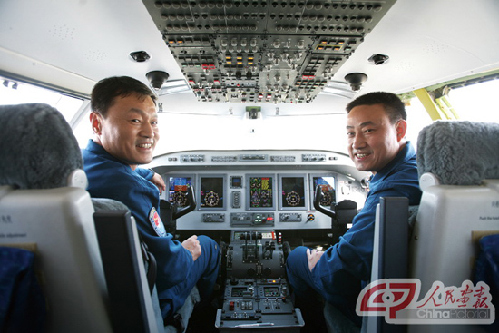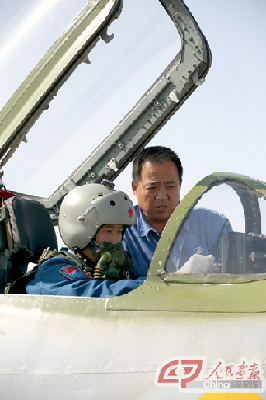A look at China's test pilots
To most people, test pilots sound like members of a mysterious profession but they are actually the top aces of the air force. And they not only test, but also help design, the latest aircraft.
An ideal job
 |
|
Commander of China's Test Pilot Regiment Zhang Jingting (L) and Chief of Staff Deng Youming |
Many boys dream of becoming a pilot when they grow up. And a job where you get to "play" with the newest and most advanced aircraft in the world, each costing hundreds of million of yuan, seems out of this world. But that's exactly what test pilots do.
According to Zou Zhongchun, political commissar of China's test pilot regiment, hundreds of test flights have to be carried out before new planes are put into service.
"Ordinary pilots may only fly one or two types of plane in their entire career. But test pilots fly many different models," said Zou. "During peacetime, very few military pilots ever launch real missiles, but test pilots get to launch dozens of missiles on test flights."
Brave and wise
Test pilots are proud of their role in advanced military research as well as their participation in the fly-past in this year's National Day military parade.
 |
|
A test pilot carries out final checks before taking-off. |
But their job is also very challenging. Test pilots are the "mine clearers" of the air force. They have to figure out the limits of a plane's performance under all sorts of conditions. It is also their job to detect design and construction problems, give advice on design optimization so as to minimize flight risks and improve battle effectiveness.
Zhang Jingting is one of three international test pilots in China. He has tested most types of aircraft – more than 30 models of fighter and freighter. "This is really a high-risk career. To become a top-grade test pilot, you must love the job from the bottom of your heart," said Zhang. "Moreover, you need first-rate skills, in-depth knowledge and a strong personality."
Zhang said that testing the J-10 fighters, the first third generation plane independently developed in China, was a prime example of risk control.
Other countries, including America, Russia, France and Sweden, all had crashes during the test flights of their third generation planes. China started training pilots while the J-10 was still in the early stages of design. And Zhang was among the first batch of pilots to be trained abroad. "Several times, we came near to a crash. But our training taught us how to react in dangerous situations. It only took us one or two seconds to take corrective action," recalled Zhang.
Theory and technique have improved enormously during the development of the J-10 fighter. Nowadays, more than 5,000 data items are transmitted to ground-based monitors in real-time and inspectors can instruct pilots to make immediate adjustments. As a result, not a single crash has occurred during the thousands of J-10 test flights undertaken over the last 10 years - which constitutes a miracle in air force history.
"A test pilot is an engineer as well as a pilot," said Zhang. "Aircraft engineers who don't fly never get first hand information of their planes. Many overseas aircraft designers are also test pilots. We can learn from this model."
 0
0 







Comments